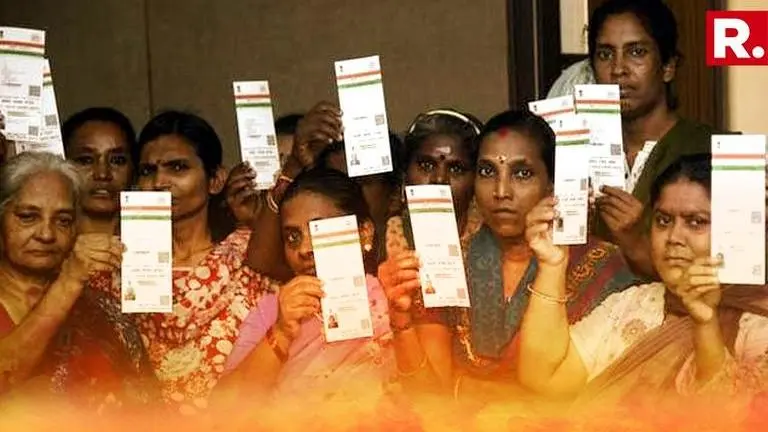Updated 26 September 2018 at 16:21 IST
Here’s why Aadhaar verdict is the biggest victory for poor and ensures that all leakages in subsidies will be plugged
The Supreme Court on Wednesday in a 4:1 judgment, upheld the Aadhaar act with caveats. The landmark verdict while giving a big push to ‘one India, one identity’ has also come as a massive victory for India’s poor.
- India News
- 0 min read

The Supreme Court on Wednesday in a 4:1 judgment, upheld the Aadhaar act with certain caveats. The landmark verdict while giving a big push to ‘one India, one identity’ has also come as a massive victory for India’s poor. The 5-judge bench headed by CJI Dipak Misra upheld Section 7 of Aadhaar Act which states that the 12-digit biometric number is mandatory for receipt of subsidies, benefits or services funded out of the Consolidated fund of India. Justice Bhushan, while reading out the judgment said the ‘state has given sufficient reasons to uphold Section 7 of Aadhaar Act which deals with grant of subsidies, welfare benefits’. Even Justice Sikri while reading out the majority judgment on Aadhaar said that there is a valid aim behind the act as it helps the marginalised and which is why curbing the loopholes instead of axing the project is in larger interest.
“There is a valid, legitimate aim behind this act. Aadhaar helps marginalised communities. Remedies to curb loopholes rather than axing the project is in larger interest,” said Justice Sikri.
118 CRORE BENEFICIARIES WIN THE BATTLE
By holding Section 7 of Aadhaar Act, the Supreme Court has ensured that the Union government’s Direct Benefit Transfer (DBT) scheme stays unaffected. The DBT transfers subsidies directly to the people through their bank accounts. Till March 2017, Rs 1,82,671.36 crore has been disbursed to 35.7 crore beneficiaries.
Between the FY14, when the DBT scheme was launched by NDA, and FY18, close to Rs 3.7 lakh crore had been transferred to its beneficiaries, through Aadhaar Payment Bridges (APB).
Advertisement
DIRECT TRANSFER ELIMINATES CORRUPTION
The judgment of Supreme Court, therefore, while ensuring that the most deserving and economically deprived don’t get hurt, made sure that the transparency in the government scheme stays. As DBT, with Aadhaar as its key, transfers money directly to the beneficiary, eliminating middlemen and duplicate beneficiaries, and hence corruption.
Between the FY14, when the DBT scheme was launched by NDA, and FY18, close to Rs 3.7 lakh crore had been transferred to its beneficiaries.
Advertisement
Aadhaar, due to its unique property, serves as a natural financial address for sending payments to accounts of beneficiaries through the Aadhaar Payments Bridge (APB). Justice Sikri, while reading out the judgment stressed on the uniqueness of Aadhaar and said, “An individual can manipulate the system having multiple PAN cards, passports etc. A person can't have multiple biometric information and therefore Aadhaar is unique. Aadhaar can't be duplicated. It is a unique identity verification.”
And, as per the numbers provided by J Satyanarayana, chairman of the Unique Identification Authority of India (UIDAI), India’s gain, as on March 31, 2008, stands at over Rs 90,000. Such enormous gains could be achieved as Aadhaar weeded out bogus and duplicate beneficiaries and plugged leakages.
Published By : Shatabdi Chowdhury
Published On: 26 September 2018 at 16:21 IST
